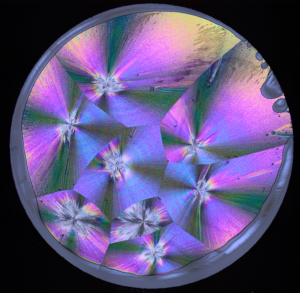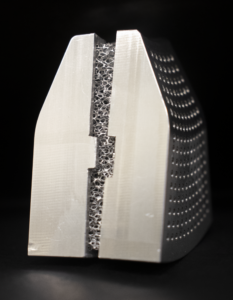 Thermal energy storage (TES) materials rapidly absorb and release heat to improve efficiency and to prevent devices or components from overheating and failing. Key challenges are demonstrating high energy storage density and high cooling power densities in stable, reversible systems. We have demonstrated:
Thermal energy storage (TES) materials rapidly absorb and release heat to improve efficiency and to prevent devices or components from overheating and failing. Key challenges are demonstrating high energy storage density and high cooling power densities in stable, reversible systems. We have demonstrated:
- Eutectic PCMs for bespoke thermal storage media.
- Strategies and tools for optimal design of high cooling-power thermal composites.
- Material-specific nucleation catalysts, resulting in significant decrease in subcooling in multiple classes of PCMs.
- Thermophysical properties of advanced phase change materials and composites.
- Figure of merit based approaches to directly compare the performance of different materials and optimized composites.
Applications: Buildings, Electronics, Aviation/Automotive, Batteries, Oil & Gas, Appliances
Projects:
- Dynamically Tunable Thermal Energy Storage Materials
- Thermal Energy Storage for Building Efficiency
- Transient Thermal Management for Electric Machines
- Design of Composite Phase Change Materials
- Nucleation in Reversible Phase Transformations

 Neuromorphic devices may enable higher performance for traditional metrics (e.g., energy consumption per operation), or allow entirely new functionalities (e.g., neuroplasticity) by emulating the function of the brain. We focus on developing materials that exhibit resistance switching (either reversible, or non-volatile) to enable new computational architectures. We have:
Neuromorphic devices may enable higher performance for traditional metrics (e.g., energy consumption per operation), or allow entirely new functionalities (e.g., neuroplasticity) by emulating the function of the brain. We focus on developing materials that exhibit resistance switching (either reversible, or non-volatile) to enable new computational architectures. We have:
 Ferrocaloric materials (magnetocaloric, barocaloric, elastocaloric, electrocaloric) serve as transducers, transforming changes in an external field to a change in the temperature or entropy of a system. This can be used to design high-efficiency refrigeration cycles or heat pumps. Despite this promise, transformation kinetics, thermodynamic irreversibilities, and other real aspects of the first order phase transformation detract from the ability of thermodynamic cycles to perform useful work. We have:
Ferrocaloric materials (magnetocaloric, barocaloric, elastocaloric, electrocaloric) serve as transducers, transforming changes in an external field to a change in the temperature or entropy of a system. This can be used to design high-efficiency refrigeration cycles or heat pumps. Despite this promise, transformation kinetics, thermodynamic irreversibilities, and other real aspects of the first order phase transformation detract from the ability of thermodynamic cycles to perform useful work. We have: